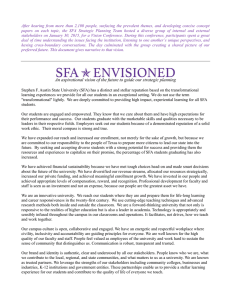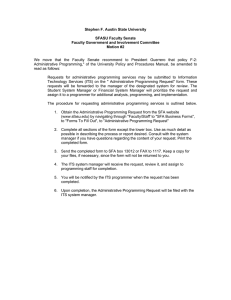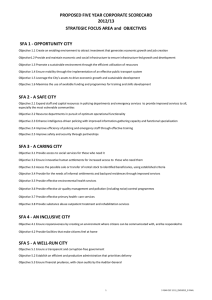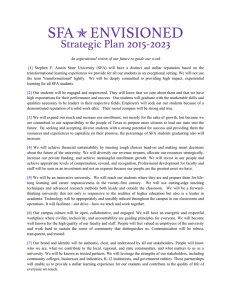DURHAM PUBLIC SCHOOLS PHYSICAL THERAPY FUNCTIONAL EVALUATION Name:
advertisement
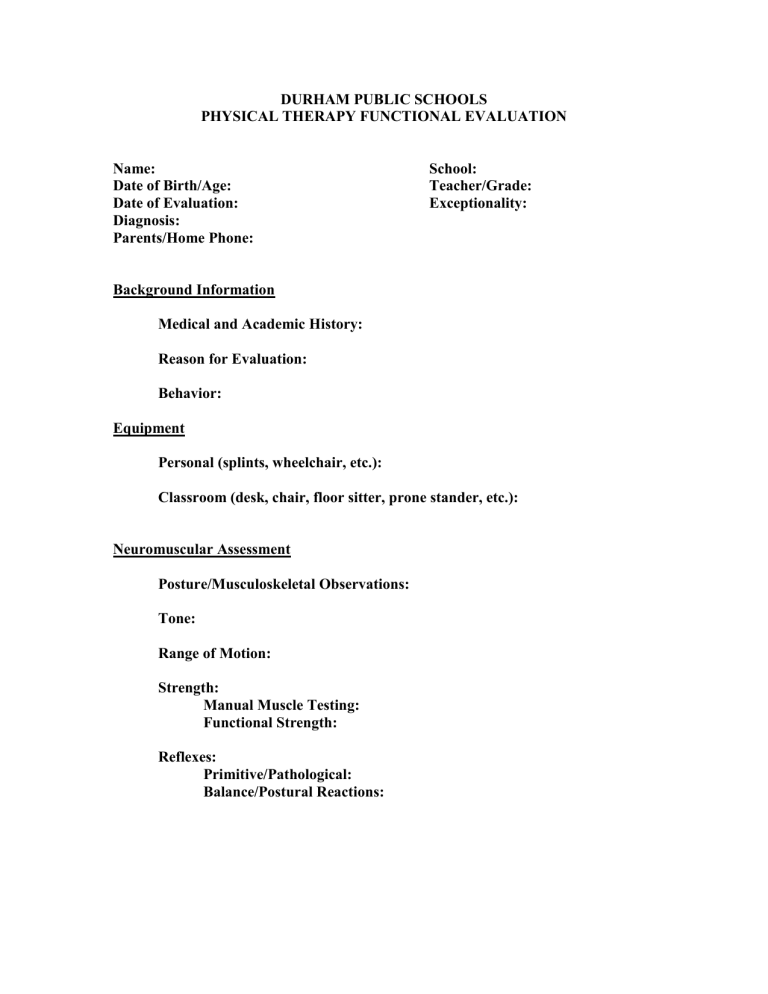
DURHAM PUBLIC SCHOOLS PHYSICAL THERAPY FUNCTIONAL EVALUATION Name: Date of Birth/Age: Date of Evaluation: Diagnosis: Parents/Home Phone: School: Teacher/Grade: Exceptionality: Background Information Medical and Academic History: Reason for Evaluation: Behavior: Equipment Personal (splints, wheelchair, etc.): Classroom (desk, chair, floor sitter, prone stander, etc.): Neuromuscular Assessment Posture/Musculoskeletal Observations: Tone: Range of Motion: Strength: Manual Muscle Testing: Functional Strength: Reflexes: Primitive/Pathological: Balance/Postural Reactions: Gross Motor Assessment Criterion Referenced Testing: School Function Assessment The SFA was designed to help collaborative teams to identify a student’s functional needs and goals in terms that are meaningful in the elementary school environment. The assessment is criterion referenced instead of standardized, and requires the judgement of a person or persons who know the student well. Unlike standardized tests, the SFA has been testesd on children with a variety of disabilities. The SFA consists of 3 parts, Participation, Task Supports and Activity Performance. Participation examines the student’s participation in 6 school environments (Transportation; Transitions; Classroom; Mealtime; Bathroom; Playground). Task Supports examines the student’s need for assistance and adaptations to perform school tasks, and is divided into Physical and and Cognitive/Behavioral Activities. Activity Performance examines the student’s performance of specific functional activities within each task area and also is divided into Physical and Cognitive/Behavioral Activities. Each part has a rating scale which is based on comparison to same grade peers. Ratings are always based on the outcome of the performance (regardless of the methods the student uses to accomplish the task). Scores indicate the student’s position on the 0-100 continuum of function (with 100 or more being where regular ed peers fall). The following graphs help identify specific arfeas which are notably high or low and where strengths and limitations facilitate or impede a task. Test Observations: Mobility/Environment-Accessibility Assessment: Classroom and School Grounds: School Bus Transportation: Summary (include how motor function, strength and physical needs impact on education): School Physical Therapist
